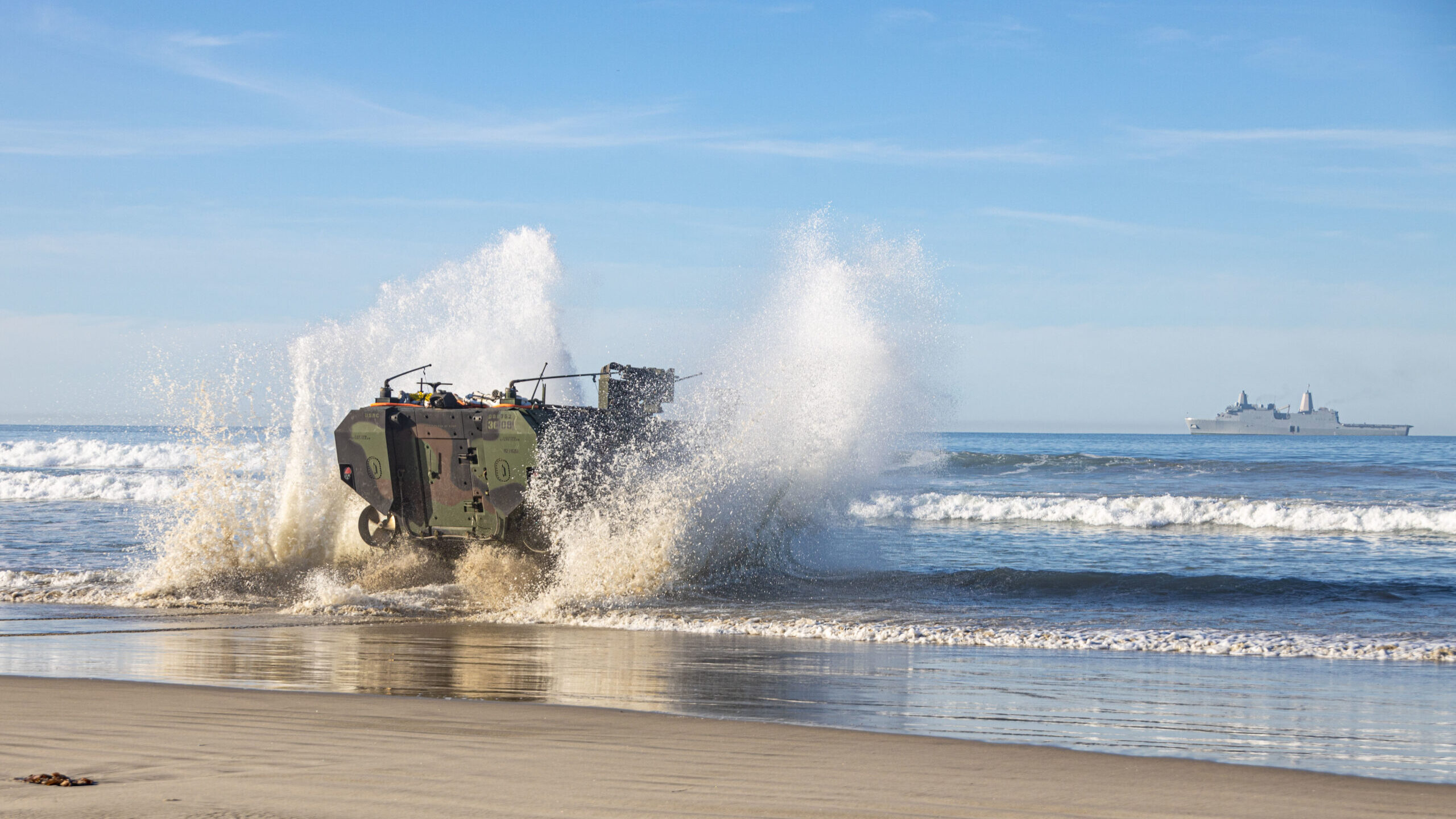
U.S. Marines conduct waterborne training with an Amphibious Combat Vehicle (ACV) from shore to loading amphibious transport dock ship USS Anchorage (LPD 23) at Marine Corps Base Camp Pendleton, California, Feb. 12, 2022. (U.S. Marine Corps photo by Lance Cpl. Willow Marshall)
WASHINGTON — The Marine Corps today announced it is standing up a “Transition Training Unit” at its school to train Marines for missions using the Amphibious Combat Vehicle, a decision that follows two years of sporadic training incidents.
“We are clear eyed about the need to get this right,” said Gen. David Berger, the commandant, in a statement released shortly after the vice chiefs of each service testified to lawmakers about military readiness. “Our Marines deserve no less, and our nation depends on it. Amphibious operations, to include the use of ship-to-shore connectors, are a foundational aspect of the Marine Corps. Our Marines will be trained safely and to the highest standard to ensure we remain the Nation’s premier expeditionary force in readiness.”
The decision was prompted by the discovery of “significant differences between the safe operating procedures of the ACV and its predecessor, the Assault Amphibious Vehicle,” according to the statement.
Investigations into the service’s practices were prompted by two years of various accidents and training injuries, including one involving an AAV that killed eight Marines and a sailor in 2020. Without referencing a specific event, the Marine Corps’ statement added that command investigations into other “2022 mishaps” are in the process of being redacted before public release.
“We are developing a program focused on performance-evaluated measurements associated with the safe operation of the ACV both on land and in water,” said Col. Howard Hall, the new unit’s senior officer. “The exceptional intensity and professionalism exhibited by the Marines of the TTU combined with the coordination and support of leaders at all levels across the Marine Corps is a testament to our commitment to facilitating the ACV transition and leveraging its impressive capabilities. This training will lay the foundation for future Assault Amphibian School and assault amphibian battalion proficiency.”
Lt. Gen. Karsten Heckl, the senior Marine charged with developing new warfighting technologies, told reporters in February that the service is working on fielding new technologies that will help Marines more effectively determine if it is safe to transit the surf zone.
“If it’s green, Marine knows, ‘I go,'” he said of the new tech. “If it’s yellow, Marine [has] got to make some decisions. [They’re going to] have to use his or her judgment. If it’s red, we’ve got to find a workaround.”
Heckl and other officials in February indicated a West Coast-based Marine Expeditionary Unit would “soon” deploy to the Indo-Pacific with ACVs in tow.
But in its statement today, the Marine Corps emphasized the need to focus on “building experience and expertise” with the ACV. “It’s important for us to get the training right before we speculate on future deployments,” the statement added.
A Marine Corps spokesman declined to answer questions about whether today’s statement contradicts those of the service’s senior officers about the potential deployment.
The ACV, built by BAE Systems, is designed to transit Marines from amphibious ships in deep blue water through the littorals and onto the beach. The Marine Corps has fielded 139 ACVs to date and is planning to field four variants: personnel, command and control, ACV-30 and recovery.








